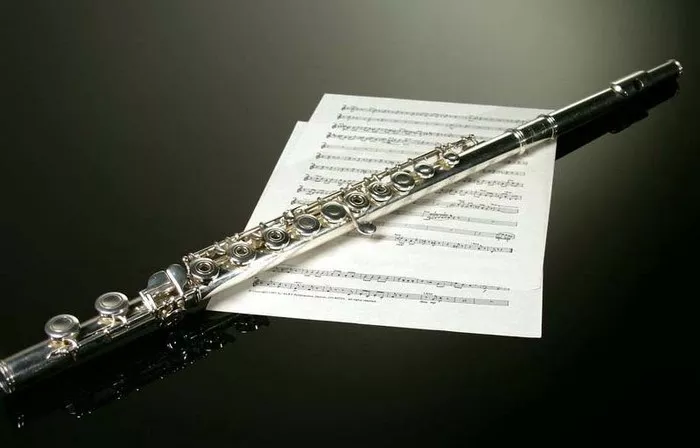The pan flute, often associated with enchanting melodies and a rich cultural history, is a unique and fascinating musical instrument. For those unfamiliar with its physical appearance, this article aims to provide a detailed visual exploration, unraveling the distinctive features that make up the pan flute.
Basic Structure: A Row of Tubes
At first glance, a pan flute presents a row of slender tubes arranged in a graduated fashion. These tubes, varying in length, are the primary components responsible for producing different pitches when played. Typically crafted from materials such as bamboo, wood, or plastic, each tube is carefully cut and tuned to create a harmonious and melodious range of notes.
The tubes are aligned in ascending order, with the shortest tube producing the highest pitch and the longest tube generating the lowest pitch. This arrangement allows the pan flute player to create intricate melodies by covering or uncovering specific tubes with their mouth while blowing across the open ends.
Mouthpiece: Crafting Sound with Precision
Located at one end of the row of tubes is the mouthpiece, a crucial element that shapes the sound produced by the pan flute. The player directs their breath into the mouthpiece, creating vibrations that travel through the tubes and generate the distinctive tones associated with the instrument.
The design of the mouthpiece varies across different pan flutes and is often crafted to suit the preferences and playing style of the musician. Some pan flutes have a simple, straight mouthpiece, while others feature a curved or angled design for added comfort and ease of playability.
Material Variations: From Bamboo to Modern Composites
Pan flutes have a rich history rooted in diverse cultures, and this is reflected in the choice of materials used for their construction. Traditional pan flutes, especially those from South America, are often crafted from bamboo. The use of bamboo not only aligns with cultural traditions but also contributes to the instrument’s distinct resonance and warmth.
In contemporary contexts, pan flutes may be crafted from a variety of materials, including wood and plastic. Modern pan flutes often incorporate materials that enhance durability, stability, and flexibility, allowing musicians to explore a wide range of musical genres.
Tube Bindings: Securing Precision in Pitch
The tubes of a pan flute are typically bound together by a series of cords or bindings. These bindings serve multiple purposes, providing structural integrity to the instrument and ensuring the precise alignment of the tubes. The tightness of the bindings is crucial in maintaining the accurate pitch of each tube, contributing to the overall tuning of the pan flute.
In some pan flutes, especially those with a more decorative or ornate design, the bindings may feature intricate patterns or colors, adding an aesthetic dimension to the instrument.
Decorative Elements: Aesthetics in Musical Craftsmanship
Beyond the functional components, pan flutes often showcase decorative elements that contribute to their visual appeal. Elaborate carvings, colorful bindings, and artistic embellishments on the tubes or mouthpiece are common features that highlight the craftsmanship of the instrument. These decorative elements not only enhance the aesthetic allure of the pan flute but also provide insight into the cultural and artistic influences shaping its design.
Variations in Size and Range: From Soprano to Bass
Pan flutes come in various sizes and ranges, accommodating different musical preferences and genres. The number of tubes on a pan flute can vary, ranging from a compact instrument with a few tubes to larger versions with an extensive range. Each size corresponds to a specific pitch range, with smaller pan flutes producing higher pitches and larger ones generating lower tones.
The soprano pan flute, characterized by its smaller size and higher pitch, is commonly used for playing melodies in the upper register. In contrast, the bass pan flute, with its larger tubes and lower pitch, adds depth and resonance to the lower end of the musical spectrum. Musicians may use multiple pan flutes together, creating a pan flute ensemble with a diverse range of tones and textures.
Carrying Cases: Protection and Portability
Given the delicate nature of the pan flute’s tubes, musicians often invest in protective carrying cases to safeguard their instrument during transportation. These cases are designed to accommodate the length and curvature of the pan flute, providing a secure and padded environment to prevent damage.
Carrying cases for pan flutes may feature handles or shoulder straps for ease of transportation. The design and material of the case contribute to both the instrument’s protection and the convenience of the musician.
See Also: 14 Steps to Mastering the Peruvian Pan Flute: A Beginner’s Guide
Conclusion: A Visual Symphony of Craftsmanship
In conclusion, the pan flute is a visually captivating instrument with a design that seamlessly merges functionality with artistic craftsmanship. From the arrangement of tubes to the intricacies of the mouthpiece, bindings, and decorative elements, the pan flute reflects a rich cultural heritage while adapting to modern materials and preferences. Whether exploring the higher notes of the soprano pan flute or delving into the resonant depths of the bass pan flute, musicians and enthusiasts alike can appreciate the visual symphony created by this remarkable instrument.


